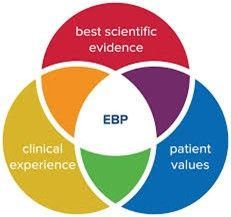STRTP and QTRP Facilities: Current Challenges
To meet these challenges, organizations will require more training, better policies and procedures, better hiring practices, and a different philosophy about the youths and their care.

STRTP and QRTP facilities, while still making a difference in youths’ lives, face critical challenges. Whether an organization has an STRTP (Short-Term Residential Therapeutic Program) in California or QRTP (Qualified Residential Treatment Program) throughout the country, the task of stabilizing a youth’s functioning is not getting any easier. In some cases, the work is becoming so difficult that more of these facilities are closing.
The treatment and guidelines are part of the Families First Preservation and Services Act designed to keep youths closer to their homes. Youths sent to these facilities display difficulty in traditional home environments such as with their family or in a foster family setting. 24-hour care, therapy, and programs are designed to help them improve their functioning. What are the challenges facing these agencies?
The higher acuity of youths. The youths now entering these facilities have more longstanding emotional and behavioral problems. Substance use, commercial sexual exploitation, fire setting, sexual offenses, runaways, and gang involvement are typical among the youths. The STRTP and QRTP having youths with more complex problems together can lead to increased dysfunction. For example, if one youth is heavily involved in sex trafficking for her “pimp”, she can encourage her housemates to join her. If they also have a history of sex trafficking, the group environment may embolden more to run away rather than less.
Reduced use of mental health services. The STRTP and QRTP may be required to hire mental health staff to provide onsite mental health services for the youths to help them with therapy, behavioral interventions, or other skills. Yet the staff can only bill for services the youth attends. If youths don’t want to go to therapy, they can’t be forced. Subsequently, the staff cannot bill, and the agency cannot receive compensation for the staff salaries. As a result, there is reduced use of the mental health services, and agencies lose money with staff who cannot treat youths unwilling to receive care.
Staff turnover. Traditionally, STRTPs and QRTPs have a 50% turnover rate of staff yearly. But with the higher level of youth behavioral challenges, together with COVID, many staff don’t want to work in these facilities anymore. Secondary trauma, together with dissatisfaction with documentation and regulatory demands makes it more challenging for agencies to hire and retain staff.
To meet these challenges, organizations will require more training, better policies and procedures, better hiring practices, and a different philosophy about the youths and their care. Therapy techniques need to be modified to meet the youth where they are at, walking a mile in their moccasins. Use of Motivational Interviewing, harm reduction, and behavioral strategies such as Functional Behavior Analysis are skills staff will need. The trauma-informed approach to youths and stress management skills are at the core and make significant differences in improving functioning. While STRTPs and QRTPs will continue to face uncertain futures, modifying programs to meet youth and regulatory needs keeps them at the forefront of residential care.




